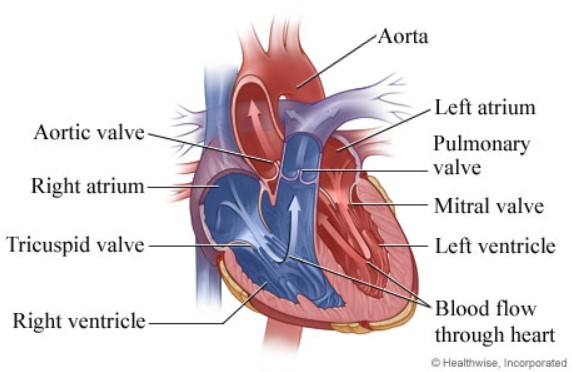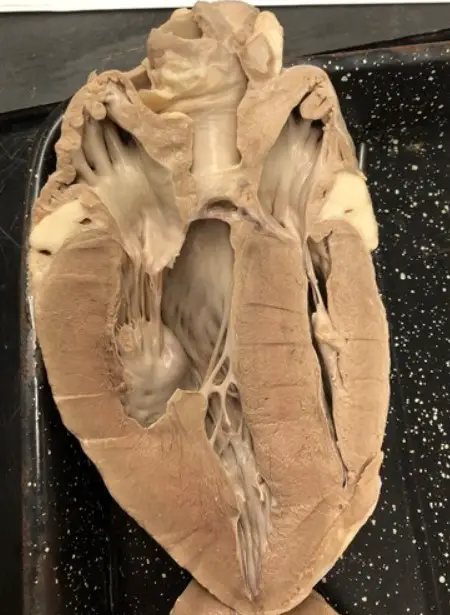No products in the cart.
Cow
How Many Hearts Does a Cow Have?
Not many people ever ask a question like: “How many hearts does a cow have?” out of the blue. Not everybody knows the answer to such a strange question, either.
Nevertheless, a lot of people seem to think that your typical bovine has up to four hearts in its cavernous chest. It’s a weird, visceral thought that would probably tickle your curiosity a little.
Whether that’s true or not remains to be seen. And why do people think that a cow has four hearts anyway? Read on to find out!
*This post may have affiliate links, which means I may receive commissions if you choose to purchase through links I provide (at no extra cost to you). As an Amazon Associate I earn from qualifying purchases. Please read my disclaimer for additional details.
How Many Hearts Does a Cow Have?
In short, a cow only has a single heart in its chest. It’s merely a popular myth that cows have four hearts. Interestingly, the myth has evolved over the years to the point where many people believe that a cow has seven hearts!
Structure Of A Cow Heart
Out of the four chambers in a cow’s heart, two are called ventricles and the other two are called atriums (or atria).
- Ventricles: responsible for pumping blood out of the heart and throughout the body of the cow. You can sort of imagining them as water pumps.
- Atriums: responsible for collecting blood and distributing them to the right ventricle. Imagine them as water valves, collecting water and directing them where they need to go.
Anatomically, the two ventricles are referred to as the “right ventricle” and “left ventricle”. The right one is bigger than the left and the two chambers are separated by a thick, sinewy wall called the interventricular septum.

How it works
The first stage of a cow’s circulation system involves the right atrium, which contains oxygen-poor (deoxygenated) blood. This blood is directed to the right ventricle through a valve called the tricuspid valve. There, the right ventricle pumps the blood to the lungs, where it picks up oxygen and becomes oxygen-rich (oxygenated) blood.
This oxygenated blood is pumped back to the heart and enters the left atrium through pulmonary veins. From the left atrium, the blood is then delivered to the left ventricle, through the mitral valve, and out to the aorta. The aorta distributes the oxygenated blood throughout the cow’s body.
At the end of this process, the blood becomes oxygen-poor again as the organs have already consumed all of it. The blood is then pumped back to the heart, into the left atrium, and the circle begins again.
If this sounds suspiciously like your high school biology class, particularly the unit on the human heart, then you’re correct. This architecture isn’t unique to cows. The hearts of mammals everywhere have virtually the same structure, including humans!
Cow’s heart vs human heart
The human heart also has four chambers – 2 ventricles, 2 atriums – as well. They do the exact same jobs described above.
The only difference between a cow’s heart and a man’s heart is the size and weight. A human heart weighs only around 7 to 15 ounces. Meanwhile, a cattle’s heart can weigh up to 5 pounds. It’s also much larger in size than ours.
Due to all the similarities, cow hearts are often used in medical classes to simulate a human heart. Medical students can dissect and learn about anatomy without having to actually sample a real human heart.
Why Do People Think: Cows Have 4 Hearts?
Like I said earlier, there is a good chance that the “cows have 4 hearts” myth arose from the fact that its heart has four chambers and someone misinterpreted that as “having 4 hearts”.
This isn’t the only myth that people had thought up about cows throughout history. Other than having multiple hearts, there are stories of cows having four stomachs (they only have one), no teeth (they do), and their knees bending the wrong way (they bend backward just like humans do).
Now, back to the heart. This intriguing misconception wasn’t born out of nowhere. While a cow only has a single heart, its heart is separated into four chambers. It’s likely that people in the past mistook these chambers as separate hearts of the cow.
Because this is a popular myth, nobody really knows who, where, and when this myth cropped up. All we know is that a lot of people seem to believe this.
What Can We Do with Cow Hearts?

There are many uses for bovine hearts. One of which is, of course, for scientific dissection purposes since it’s so similar to the human heart.
Cooking
Cow hearts are edible and can be found in many recipes and delicacies worldwide. It’s often mixed in with livestock internal organs called offal. Offal is edible, very dense in nutrients, and cheap.
However, since most westerners shun it, offal is only ever used as feed for animals. In other parts of the world, particularly in Asian countries, offal — including cow’s heart — is used in many recipes and served as delicacies.
Medicine
Remember how the cow heart is very similar to the human heart? It turns out that the degree of similarity is so great that you can graft pieces of a cow’s heart to human suffering from heart failure, too. Typically, heart valves are removed from a cow and donated to a person with defective valves.
Fertilizer
Discarded cow hearts can make for a good fertilizer base. Just bury it in the soil and all of the bacteria in the soil will do the rest. Nutrients are broken down and soaked into the ground, feeding the plants growing nearby. It’s a perfectly natural way to recycle.
Animal Feed
This point has already been mentioned. In countries where offal is not eaten, spare animal parts are fed to other animals.
FAQs
1. How do we know that cows have one heart?
This problem has been very well researched over the years. Scientists regularly dissect cows to learn about their anatomy, including the heart.
If you need more concrete evidence, you can drop by your local butcheries to ask around. Watching a newly-butchered cow, you will see that it only has one heart in its chest.
2. What animals have more than one heart?
Though it may sound bizarre, an animal having several hearts isn’t unheard of in nature. They can be found all over the world and may even be in your local area.
However, that they exist doesn’t necessarily mean that they’re common. The vast majority of animals only have one heart, so whatever species that ended up with more than one are quite special indeed.
Here are a few!
- Octopus
An octopus can have up to 3 hearts. They’re the best example of species with multiple hearts. Although there are hundreds of octopi sub-species, every single one of them has 3 hearts.
One heart works just like ours, pumping blood throughout their body. The other 2 hearts pump blood through their gills.
They can be found in oceans everywhere. Aside from their peculiar shape, octopi also have many special skills, such as quickly changing the color of their skin to avoid predators. Octopi are also very intelligent and may be able to use tools!
- Squid
A close sibling of octopi, squids also have 3 hearts. They serve the same function, too: one for normal circulation, two for pumping blood through their gills.
Similar to octopi, they’re distributed evenly throughout the Earth’s oceans. Squids vary in size greatly. Some, like the Giant Squid, can be up to 45 feet long.
- Earthworm
Earthworms beat octopi, squids, and even the mythical four-hearted cow by having 5 hearts. These “hearts” are rather primitive organs. So primitive that a lot of scientists don’t even consider them as real hearts.
While they’re surely creepy, they’re great for soil. Earthworms decompose materials, turn them into fertilizer, and help the surrounding plants grow more strongly.
- Hagfish
Hagfish live in waters that have poor oxygen content, so they have evolved to suit their environment. In total, a hagfish can have 4 hearts: one for circulation, the other three help the main heart at pumping oxygenated blood. Their hearts can continuously pump for up to 36 hours in environments with no oxygen at all.
You can find this type of fish in the Atlantic and Pacific. They’re known for producing a lot of sticky slime as a defense mechanism. Predators tend to avoid hagfish since its slime can clog up their gills and choke them to death.
- Cuttlefish
Cuttlefish is another close sibling to the octopi and squid. It also has 3 hearts: one for circulation, two for pumping blood through the gills.
They can be found in oceans everywhere, but the largest species live around Australia. Though they don’t look like they’re very bright, cuttlefishes are extremely smart. They’re one of the most intelligent invertebrates that we’ve known.
- Cockroaches
Have you ever wondered why cockroaches are so hard to kill? One of the many reasons is that they have 13 hearts.
The “hearts” are arranged in a single line, each one pumps blood to the next. Because of this, a lot of scientists have disputed the claim and said they only have one heart with 13 chambers.
No consensus yet, but for now, let’s say that it has 13 hearts.
The sheer amount of hearts that it’s got makes cockroaches extremely resilient. It’s nearly impossible for their hearts to fail. If one was to fail, the other 12 simply picked up the pace.
You’ll love: How Much Does A Cow Cost?
Final Words
So, to answer your question of how many hearts a cow has… ONE. More specifically, ONE heart with FOUR chambers.
It’s a strange piece of info that’s only ever useful to farmers. However, now that you know, you can add this to your arsenal of fun facts and use them in weekend trivia nights or pub quizzes!
